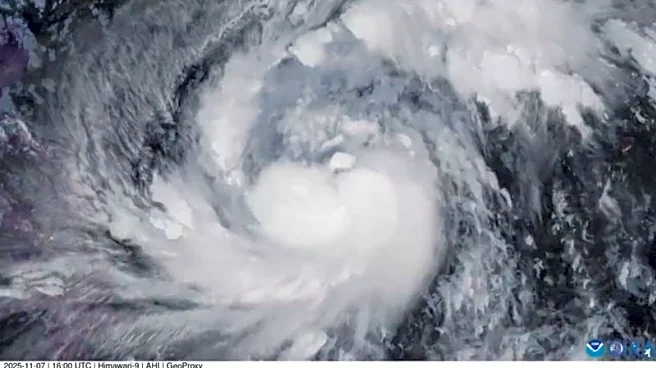What's Happening?
The Philippines is conducting a large-scale evacuation as Super Typhoon Fung-Wong approaches, threatening to become one of the most powerful storms to hit the region this year. Over 100,000 residents have
been evacuated from eastern and northern areas, with the storm expected to make landfall in central Luzon. The Philippine Atmospheric, Geophysical and Astronomical Services Administration (PAGASA) has issued the highest alert level, Signal No. 5, for southeastern Luzon, while Metro Manila is under Signal No. 3. The typhoon, with sustained winds of 185 kph and gusts up to 230 kph, poses significant risks to infrastructure, agriculture, and economic activities in densely populated areas.
Why It's Important?
Super Typhoon Fung-Wong's arrival highlights the Philippines' vulnerability to severe weather events, following the recent devastation from Typhoon Kalmaegi. The storm's impact extends beyond immediate physical damage, threatening critical infrastructure and economic stability in one of Asia's most densely populated regions. The U.S. Embassy has issued warnings to American citizens in affected areas, emphasizing the potential for life-threatening conditions. The storm's trajectory and intensity could lead to widespread power outages and transportation disruptions, affecting both domestic and international flights.
What's Next?
The typhoon is expected to make landfall in Aurora province, with peak impacts anticipated Monday morning. Authorities are urging residents to stay informed through official channels and follow evacuation orders. Recovery operations will commence post-storm, focusing on infrastructure repair and humanitarian aid distribution. The U.S. Embassy recommends American citizens enroll in the Smart Traveler Enrollment Program for real-time updates and assistance.














